61 years ago today, the British Invasion arrived in the US after The Beatles reached #1 on the Billboard Hot 100 with I Want to Hold Your Hand, before eventually being replaced by their previous #1 single, She Loves You. The little 32-bar diddy in G-major was written by John and Paul, as the former described it “eyeball to eyeball; into each other’s noses” and was recorded on a 4-track. READ what happened next… (1964)
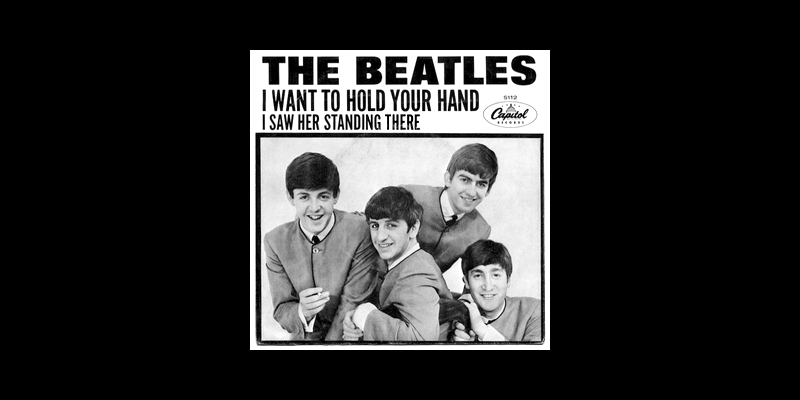
A week after its release, the single entered the British charts on 14 December 1963. It knocked She Loves You off the top spot, the first instance of an act taking over from itself at number one in British history, and it clung to the top spot for five weeks.
It was only at this time that American label Capitol Records, a subsidiary of EMI, agreed to release it stateside. The demand was insatiable; in the first three days alone, a quarter of a million copies had already been sold (10,000 copies In New York City every hour). Capitol was so overloaded by the demand, it contracted part of the job of pressing copies off to Columbia Records and RCA.
MORE Good News on this Date:
- Thomas Edison finished the first motion picture studio, the Black Maria in New Jersey (1893)
- New York’s Grand Central Terminal opened as the world’s largest train station (1913)
- The Royal Canadian Mounted Police began (1920)
- Canada introduced the Civil Marriage Act, making Canada the fourth country to sanction same-sex marriage (2005)
- Jóhanna Sigurðardóttir was elected the first female Prime Minister of Iceland, and became the first openly gay head of state in the modern world (2009)
- Today is the first day of Black History Month in the United States. It marks the day four black college students began to stage their sit-in at a lunch counter—a protest that lasted weeks and pressured governments to pass desegregation laws. (1902-1967).
On this day 124 years ago, the African-American writer, poet, and playwright Langston Hughes was born on what would become the first day of Black History Month. Hughes became a prominent figure in the Harlem Renaissance, writing often for The Crisis, the official magazine of the NAACP, as well as a weekly column in a primarily black newspaper called the Chicago Defender. He was also one of the earliest pioneers of what would become jazz poetry. Rather than simply taking an anti-segregation stance in his work he focused often on the divisions and prejudices within the black community itself, as well as many other cultural and societal aspects of America between the 1920s and the 1960s.
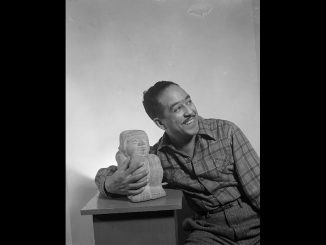
His poetry and fiction portrayed the lives of the working-class blacks in America, lives he portrayed as full of struggle, joy, laughter, and music. The first collected poems published in 1921 in The Crisis were called The Weary Blues, and the poem of the same name remains one of his principle works.
“Droning a drowsy syncopated tune,
Rocking back and forth to a mellow croon,
I heard a Negro play.
Down on Lenox Avenue the other night
By the pale dull pallor of an old gas light.”
In The Negro Artist and the Racial Mountain, Hughes wrote: “The younger Negro artists who create now intend to express our individual dark-skinned selves without fear or shame. If white people are pleased we are glad. If they are not, it doesn’t matter. We know we are beautiful. And ugly, too. The tom-tom cries, and the tom-tom laughs. If colored people are pleased we are glad. If they are not, their displeasure doesn’t matter either. We build our temples for tomorrow, strong as we know how, and we stand on top of the mountain free within ourselves.” (1901)
12 years ago today, London’s Shard opened its viewing platform to the paying public, allowing visitors to look out over the city through “tell:scopes” which give additional information about famous landmarks as you pass over them. The tallest building in the city—a set of glass spikes tapering up to the heavens, was originally disliked and lamented by Londoners as out of place, among other things, but some perhaps softened when the monument to foreign investment allowed Londoners to see their city like never before.
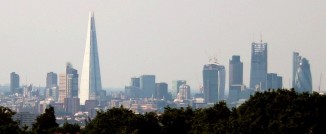
“From 244 meters (801 feet) up, the towers of the City look like dinky chess pieces, the looping spaghetti of railway lines like a toy train set, commuters scuttling like ants below on the platforms,” wrote Oliver Wainwright after seeing the summit. “The whole of London is flattened beneath you, every snaking bend of the Thames spread out before you. You’re not part of the city here, but suspended above it – so detached, in fact, that any sense of vertigo fades away.”
“It is a relief to climb the stairs to the uppermost open deck of the 72nd floor, where the city sounds hit you along with gusts of fresh air. Surrounded by fractured plates of glass sliding to a jagged halt and the open steel carcass soaring several floors above to the ultimate summit, it is a breathtaking sight.” (2013)
65 years ago today, four black students from North Carolina A&T State University sat down at the “whites only” lunch counter inside a Greensboro Woolworth store. Although they were refused service, they stayed until closing. More joined them over the next few days and sit-ins spread to other North Carolina cities. On July 25, 1960, after losing $200,000 in sales because boycotts were set up, the Greensboro store abandoned its segregation policies.
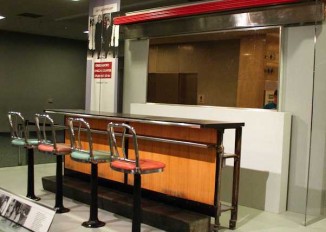
Four years after the Greensboro Four (Joseph McNeil, Franklin McCain, Ezell Blair, Jr., and David Richmond) staged their sit-in, The Civil Rights Act of 1964 mandated desegregation in all public accommodations, including beaches, libraries, parks, and museums.
A section of the lunch counter from the Greensboro Woolworth (pictured, above) is preserved in the Smithsonian Museum of American History, and the original building at 132 South Elm Street now houses the International Civil Rights Center and Museum. (1960)
129 years ago today, the Italian opera La Boheme by Puccini premiered in Turin, Italy, with an orchestra conducted by the 28-year-old great Arturo Toscanini.
One of the most frequently presented operas worldwide, the four-act performance is based on a collection of vignettes portraying two young bohemian lovers living in the Latin Quarter of Paris in the 1840s. If you’ve never watched the opera, YouTube offers a number of versions you can view in their entirety for free. (1896)
And on this day in 1982, Late Night With David Letterman first aired.
Edgy and unpredictable, with recurring segments like Stupid Pet Tricks, Stupid Human Tricks, and Top 10 lists, the show won millions of devoted fans. As the longest-running late-night talk show host, Letterman won two Daytime Emmys and ten Primetime Emmys and was among the most nominated people in the history of the award show with 52 nominations. He retired in May, 2015. WATCH the show’s most memorable moments…
SHARE The Milestones, Memories, and Music…





















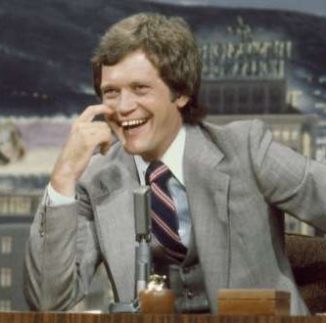
[…] The Good News Network […]
[…] post Good News in History, February 1 appeared first on Good News […]
[…] Good News in History, February 1 – Good News Network […]
[…] Posted From: https://www.goodnewsnetwork.org/events070201/ […]
[…] Brought to you by:- https://www.goodnewsnetwork.org/events070201/ […]